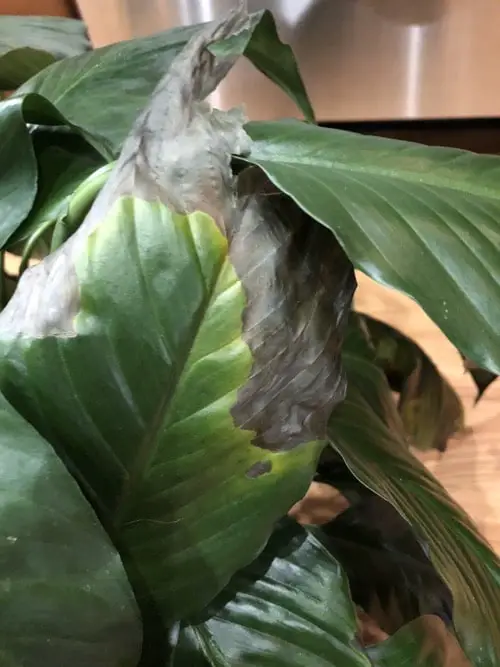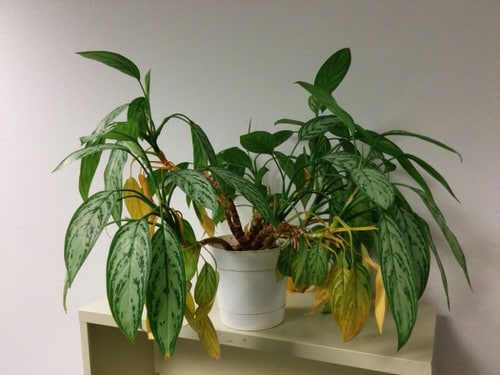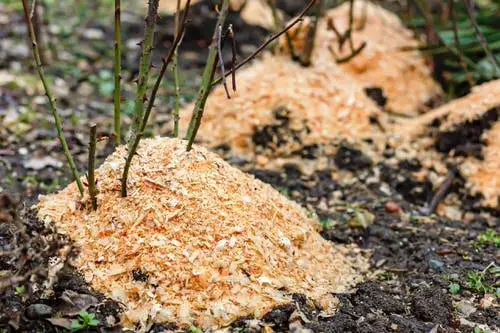Nitrogen Toxicity Symptoms in Plants is something that you need to look out for in time before it causes damage. Here are the signs to keep an eye on!
There are several factors that can affect a plant’s growth. Nitrogen Toxicity Symptoms in Plants are crucial ones that you need to keep a vigilant eye on to ensure your green friends stay healthy.
Read about the signs that show plants need nitrogen here!
What Causes Nitrogen Toxicity?

Nitrogen toxicity is commonly caused due to the presence of excessive nitrogen in the soil and consistent over-fertilization. Plants require nitrogen during the vegetative stage of their growth but too much of it stunts the plant. This study gives a brief idea of the acute reasons for nitrogen toxicity in plants.
How to Detect Nitrogen Toxicity Symptoms in Plants?
Nitrogen toxicity is a common condition and can be detected easily by closely monitoring the plant’s appearance and growth.
1. Abnormal Dark Green Foliage

If your foliage starts showing darker shades than usual, there are high chances of nitrogen concentration around the root ball.
2. Excessive Vegetative Production
Don’t let lush overgrowing leaves fool you, as excessive foliage production is the clearest sign of nitrogen toxicity in most plants. If it is a flowering plant, then it won’t bloom at all, if it’s a herb it won’t be that flavorful.
3. Yellowing of Leaves and Turned Down Tips

Excessive nitrogen takes away the water from the soil, leaving the salt behind, which gives the plant a burnt look with yellow foliage and turned down clawed tips.
4. Thin, Tall, and Lanky Growth
Plants having too much nitrogen will grow tall and spindly. Foliage shows lanky growth instead of a fuller appearance, with the wild growing pattern.
5. Plants Get Prone to Pests, Diseases, and Frost Damage

Study says excessive nitrogen leads to salt build-up in the soil, thus making the plants weak and susceptible to frost damage and a heck of diseases. Also, such plants face more pest infestation.
6. Spots on the Leaves
Nitrogen toxicity leads to nutrient burn, which stresses out the plant. To compensate for the condition, the plant tends to absorb more water with high nitrogen levels, worsening the toxicity. Prolonged conditions lead to spots on foliage hence killing the plant.
Problems that are confused with Nitrogen Toxicity
- Yellow leaves due to iron deficiency
- Curving or cupping of foliage due to overwatering
- Light burns due to excessive sun exposure
- Yellow coloration due to sulfur deficiency
- Stunted growth due to over-fertilization
How to Fix Nitrogen Toxicity in Plants?

The most important task is to verify if the plant is affected by nitrogen toxicity. The soil needs to be flushed as soon as the problem is determined.
- If possible, get an NPK soil tester kit to check out the nitrogen levels in the soil.
- Add organic matter to the soil, such as autumn leaves, straw, and coconut coir. The organisms present in the soil use nitrogen to break down these particles that, in turn, release nitrogen in a manageable form.
- Flush the excess nitrogen from the soil using water with a neutral pH. Also, take these measures suggested here to avoid overfertilization.
- Make sure to maintain the correct pH of the growing medium. Excessive alkaline or acidic state will induce nitrogen toxicity in the soil.
- Add a little potassium to the medium to help the plants bloom and fruit. Diluted seaweed solution provides resistance to pests and diseases.
- Replace the growing medium with fresh soil. Avoid hard or tap water that is rich in minerals.
- Start using low nitrogen fertilizer until the excess nitrogen problem is subsided.
How Long Does It Take to Recover?
It takes at least a week to treat nitrogen toxicity in most plants. However, the time depends on the level of the nutrient concentration in the medium. Give your plant some time to recover and rejuvenate after the undesirable condition.
Check out this article to Bring Back Your Dying Plant to Life!


